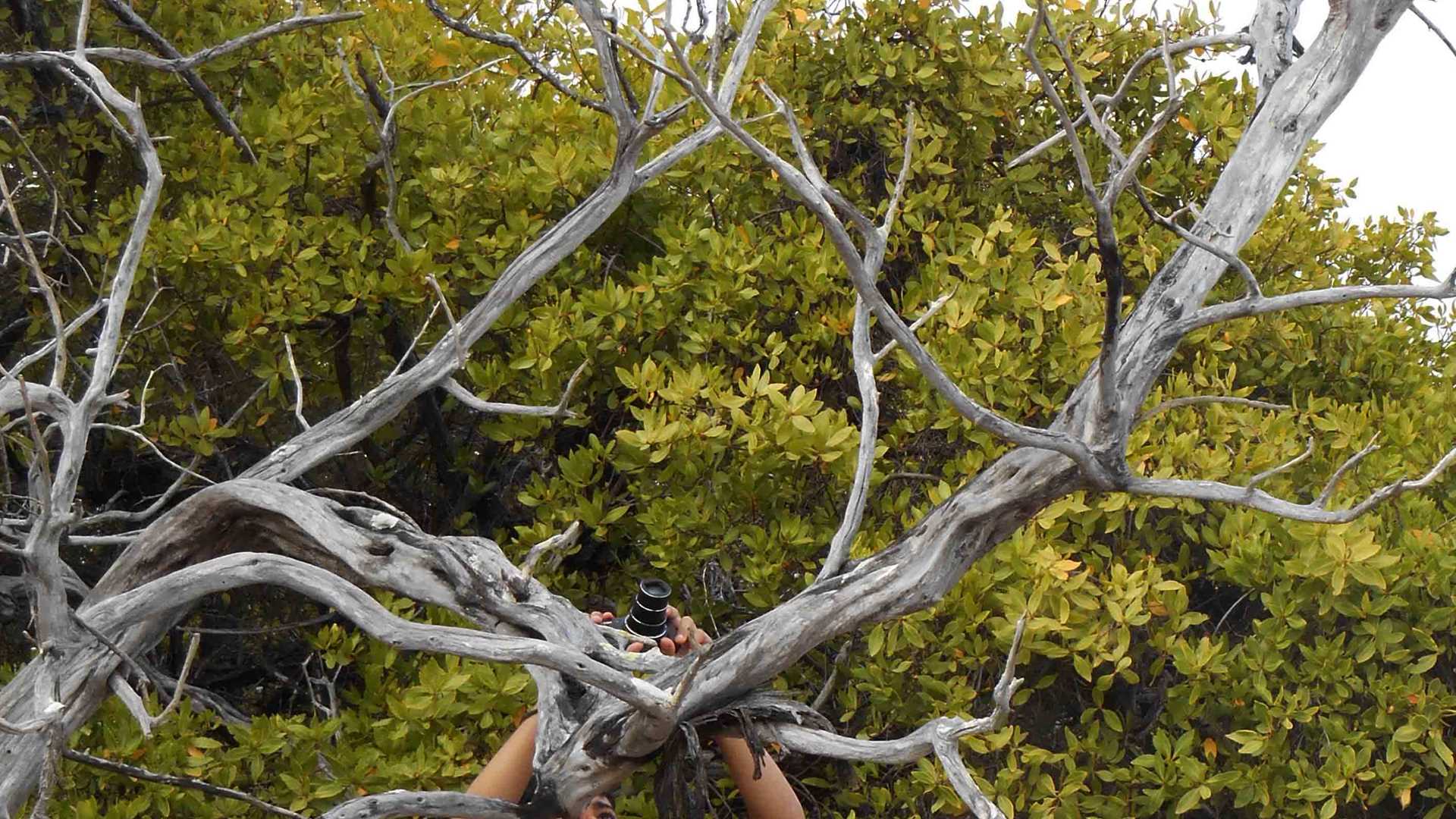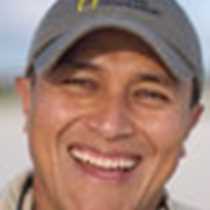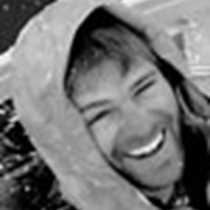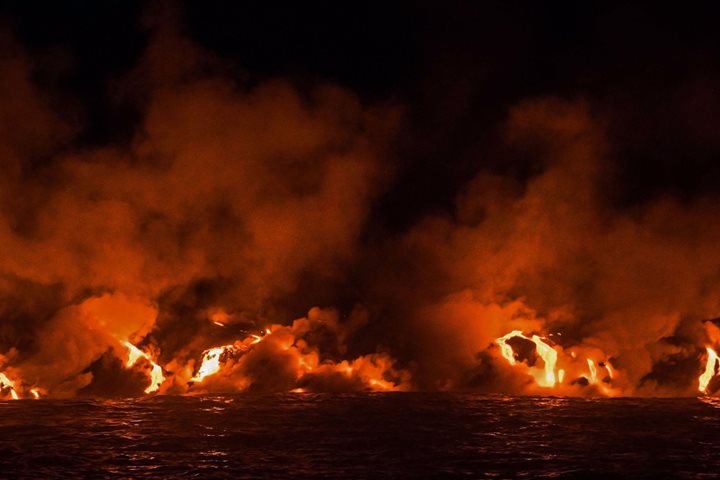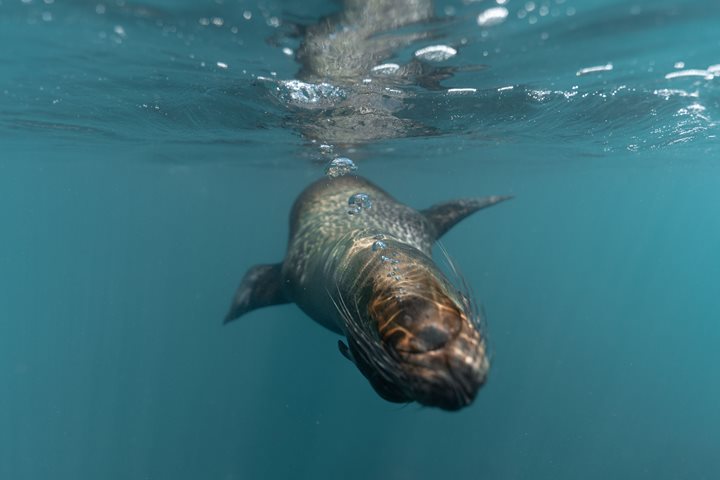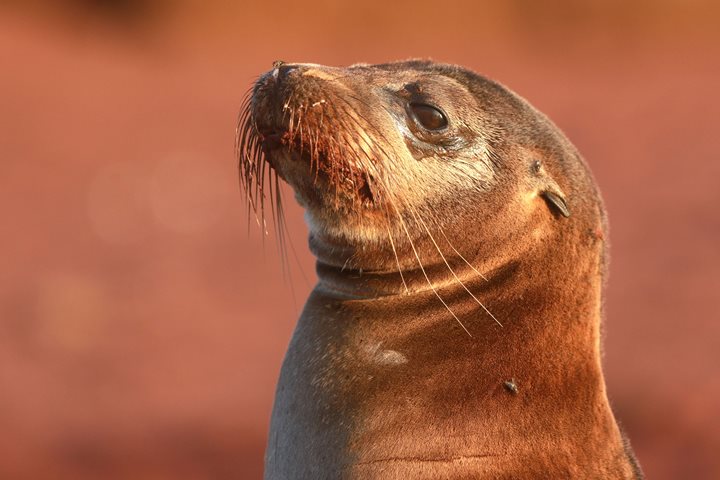Today we anchored at Santiago Island, the 4th largest island of the Galapagos archipelago. Santiago Island is a good example of how conservation and tourism have an enormous positive potential when managed properly. Thanks to the contributions of Lindblad Expeditions/National Geographic to the restoration of this island, we can now witness a recovery of its natural flora and fauna. At 6:30 am, before breakfast, our first landing was Espumilla beach. This soft, brownish sandy beach surrounded by majestic mangroves is a wonderful site to go for an early morning walk. Sea turtles use this beach as a nesting site. In fact, this is one of the most important nesting areas for sea turtles in the Galapagos. I find it moving the fact that every adult sea turtle is a survivor of many oddities along their life cycle. Hence, each individual nest we saw was the result of such a fascinating survival process. We trekked along an old holy stick tree forest whose aromatics surrounded us. After crossing through vegetation tunnels and crossing a dry waterfall to reach the highest point of the trail, we came back to discover two juvenile Galapagos hawks resting on a mangrove branch just in front of the beach. This was a great opportunity to put into practice the photographic tips that we have learned during the week.
After breakfast we went on to explore the tuff cliffs of Buccaneer’s Cove with our kayaks. The layers of ash and intrusive rocks along the eroded cliffs produce an incredible image which could have come from a surrealist canvas. Kayaking around this vivid landscape is an experience which reminds us why Galapagos is so inspiring and unique. Later on we had the chance to snorkel with Galapagos fur seals and sea lions. The visibility today was amazing, so we spotted many new species of fish that we haven´t seen on the previous days. The endemic Galapagos barnacle blenny and the saber tooth parrotfish were some of the highlights of this water outing.
In the afternoon, we started with a hands-on activity for our younger explorers. They painted hats with Galapagos designs. I have to admit that their creativity is clearly inspired by many days of deep contact with nature. Following this my naturalist colleague, Fabian, gave a stimulating lecture on Charles Darwin and his influence on the Galapagos islands. Later on our final visit was Puerto Egas. Here some of our guests chose to take a long hike across the grottos where the Galapagos fur seal finds a perfect resting area. The rest of the group preferred to stay at Puerto Egas beach where we also had the option of a second round of snorkeling for the day. Those who went into the water did not regret it. A massive school of sardines surrounded the group of snorkelers, who were able to witness the abundance of life in the underwater world of the Galapagos. Blue footed boobies plunging at astonishing speeds and playful sea lions swimming in front of our eyes made for a perfect ending to this outing. To finish such a fantastic day we had a delicious barbeque dinner on the deck of the National Geographic Islander. Today was a unique day in the Galapagos, every second of it.

